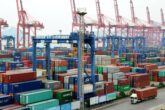September 07, 2018
Beyond Defining a ‘Free and Open Indo-Pacific’
Nearly one year in to the United States, Japan, Australia, and India’s collective pursuit of a “Free and Open Indo-Pacific,” broad misunderstandings of the policy’s intentions and objectives endure. These hyper-analytic concerns are misguided and limit experts’ capacity to evaluate tangible, fact-based shifts in regional powers’ Indo-Pacific policy.
Despite robust evidence to the contrary, some continue to insist that the free and open Indo-Pacific (FOIP) represents an anti-China alliance or a sophisticated U.S.-led containment strategy. This analysis overlooks the regionally-driven nature of the strategy, which was first announced by Japanese Prime Minister Shinzo Abe in August 2016. Furthermore, Australia began using the “Indo-Pacific” construct in official government documents as early as 2013. India’s “Act East” policy, which is a foundational element of its “free, open, and inclusive” vision for the Indo-Pacific region, was initially unveiled in 2014.
Perhaps pundits’ confusion can be attributed to the absence of a single coherent document from Quad countries defining what FOIP actually is. But such a document would actually erode the strength of a truly “free and open Indo-Pacific” by constraining each state from shaping their own policy over time in the ways that support its national interests. A common public document would also diminish the inclusivity Indian Prime Minister Narendra Modi so aptly stresses and limit ASEAN’s ability to play a central role.
This is not to say that Indo-Pacific states should be content to develop their own strategies in complete isolation. To the contrary, countries throughout the region interested in the maintenance of a free and open order should develop a common operating picture at the government-to-government level for the Indo-Pacific and its future. In the past few months, onlookers have seen a lot of progress on this front — the overwhelming congruities in the United States, Australia, Japan, and India’s respective strategies are indicative of this. However, instead of strategic consultations being a “one-off” event in preparation for a strategic review, states should institutionalize and regularize these contacts to ensure that one another’s insights are enriching allies’ and partners’ approaches.
Nearly a year after the roll-out of the U.S. Free and Open Indo-Pacific Strategy, it is time to shift away from discussing what FOIP is or isn’t, and instead focus on indicators to gauge success. Unfortunately for policymakers, expectations among the expert community and the region are high, and it will require concrete actions, rather than rhetoric, to interrupt China’s narrative of the inextricable U.S. decline and withdrawal from the Pacific theater.
Read the Full Article at The DiplomatThe Diplomat
More from CNAS
-
Ziemba: Struck By Energy Deal Between India & Saudi Arabia
Saudi Arabia and India have agreed to deepen energy ties and cooperate more closely on tourism and technology as the countries seek to strengthen relations at a time of turbul...
By Rachel Ziemba
-
Trump’s Crackdown on Foreign Students Is a Gift to China
When top global talent no longer sees America as a stable, long-term bet — in light of both visa and research funding insecurity — many will vote with their feet....
By Jordan Schneider
-
Trump Administration Realises That The Tariff Strategy Has Backfired: Lisa Curtis
Trump administration realises that the tariff strategy has backfired, says Lisa Curtis, senior fellow and program director at the Center for a New American Security.Watch the ...
By Lisa Curtis
-
Ep 187: Richard Fontaine on the “Reverse Kissinger”
Richard Fontaine, CEO of the Center for a New American Security (CNAS) and co-author of No Limits? The China-Russia Relationship and U.S. Foreign Policy, joins the show to dis...
By Richard Fontaine




